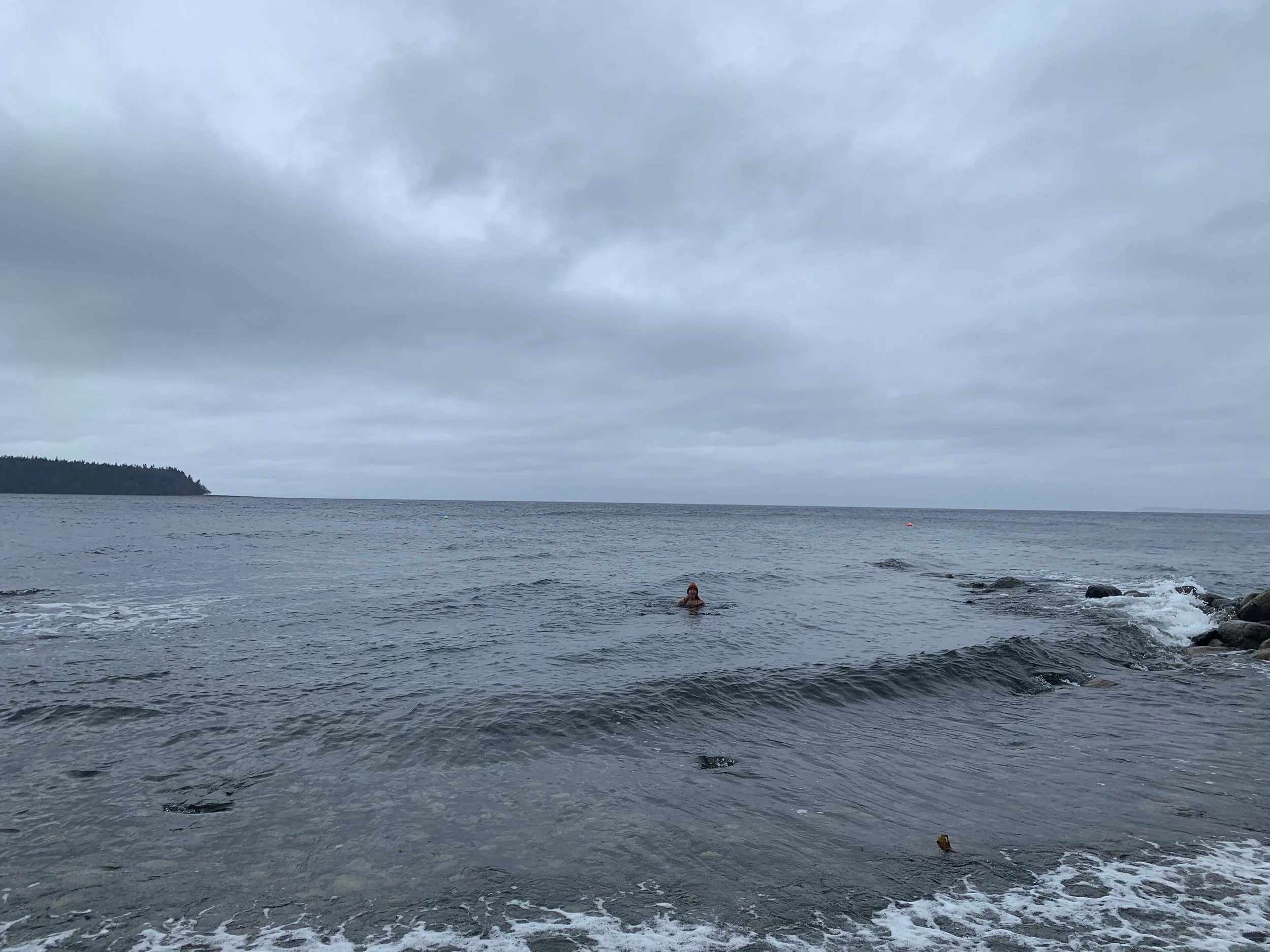Deliberate Cold Exposure for a Resilient Nervous system
Sunday Salish Sea Plunge! March 23rd 2025 — Water temperature 7.4C Air Temperature 6C. Brrrrrr! but worth it for how invigorated I feel after — see the latest science outlined below!
“Stress is the nonspecific response of the body to any demand , whether it is caused by, or results in, pleasant or unpleasant conditions…” — Dr. Hans Selye, Hungarian-Canadian Endocrinologist/Physiologist (excerpt from ‘The Stress of Life’ revised edition 1978). “We must however, differentiate within the general concept of stress between the unpleasant or harmful variety, called ‘distress’ (from the Latin dis = bad, as in dissonance, disagreement), and ‘eustress’ (from the Greek eu = good, as in euphonia, euphoria). The work of Thomas Hanna Ph.D. (founder of the field of Somatics) was derived in-part from Selye’s groundbreaking research on stress on humans and resulting ‘diseases of adaptation’/his formulation of the General Adaptation System (GAS).
I’ve been sea plunging since mid March (three times a week now) and while I will freely admit that enjoyment is not how I’d describe the experience while in the frigid water, the feelings of euphoria, greater alertness and strangely, a simultaneous calm, make up for that! I have, however, intentionally chosen to plunge in cold water for fun (!) making this this is eustress (good stress) rather than distress (bad stress). I’m in control, in a safe environment and I ensure I’m accompanied in the event that I fall on the slimy rocks underfoot.
I feel fantastic for at least a few hours after a cold plunge — every time. Today I took a closer look at the research surrounding cold plunging/immersion which included studying the Andrew Huberman podcast (and accompanying show notes) titled ‘Using Deliberate Cold Exposure for Health and Performance’ (April 4th 2022).
To summarise, cold exposure can be used to safely stress the body to improve attention, mood, and cognitive focus and boost metabolism. All great stuff! But here’s the part that really pricked my ears up (and is directly linked to the work of Hans Selye, whose work Hanna’s system of bodily-education is based on):
Huge levels of dopamine are released with long-lasting effects, hence my feeling so fantastic post-plunge! The increase in dopamine means an enhancement of attention, feelings of wellbeing and mood for hours after, similar to the amount of dopamine elicited by things like nicotine and alcohol (which are of course addictive and dependence-producing). Cold water immersion produces the same if not greater increases of dopamine but with no harm!
Levels of the neurotransmitter norepinephrine produced are similar to working out cardiovascularly at a medium level, with the effects lasting a considerable period of time after, resulting in an increase in mental acuity and ability to focus. There’s a corresponding increase in metabolism, and inflammation is reduced in the body.
Strikingly, however, there are no significant increases in stress hormone cortisol, it even reduces in deliberate cold water immersion. According to Huberman this is “surprising, interesting and important” because the quality of stress that deliberate cold exposure is creating in the body is one of eustress — positive stress. Additionally, separate research shows that cold-plunging normalises the production of serotonin (a neurotransmitter that is commonly underactive in people with depression and PTSD). My Salish Sea plunges therefore help form greater resilience to stress in the brain and body by creating a neurochemical combination that actually has multiple benefits!
When humans experience a traumatic event and go on to develop PTSD, the vagus nerve gets ‘out of sync’ — it doesn’t respond to stress as it normally would. Disrupting the vagus nerve and the ANS pathways means we can’t perform our normal functions, and can cause many PTSD symptoms. Cold plunges waken up the vagus nerve and kicks it into action. The cold exposure also puts a brake on sympathetic system activation by raising tolerable stress limits (and, by default, delaying the release of stress chemicals) and consciously controls arousal – that is, recognising discomfort and not giving into fear. Learning how to ‘just be’ during the experience has the result of expanding our window of tolerance — that is, when everyday stressors come into our lives again we can see them for what they are: not life threatening.
To quote Thomas Hanna: “Hans Selye’s somatic viewpoint has expanded the dimensions of health research by emphazising the health importance of what we, from the inside of ourselves, can do to reduce the effects of stress by our own attitudes and by the way we control our lives. This emphasis on self-responsibility is a hallmark of the somatic viewpoint.” (from his pioneering book “Somatics’ 1988).
Along with a regular Somatic Movement practice, the latest science on cold water immersion demonstrates that is an additional ingredient to our ‘resilience toolbox’!
